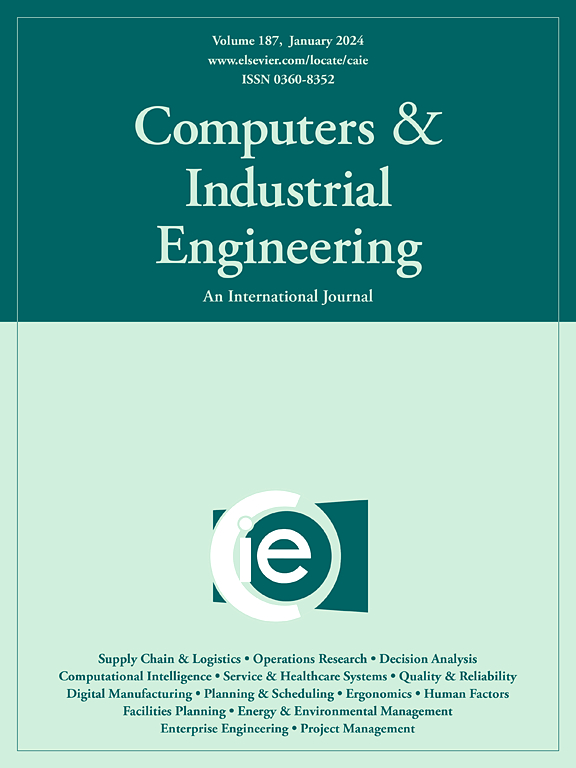IRS-guided policy search in model based reinforcement learning for virtually coupled train sets control
IF 6.5
1区 工程技术
Q1 COMPUTER SCIENCE, INTERDISCIPLINARY APPLICATIONS
引用次数: 0
Abstract
Virtually Coupled Train Set (VCTS) is a railway operation concept that allows shorter train intervals. However, the complex dynamic model of train convoy in urban rail transit systems (URTS) makes it challenging to achieve efficient cooperative controller for VCTS. Existing methods for VCTS control assume accurate train dynamics models are available, which is difficult to achieve in real-world VCTS scenarios. In this paper, we present a framework that employs model-based reinforcement learning (MBRL) to control VCTS. In comparison with classical methods and model-free reinforcement learning (MFRL), MBRL can learn more efficiently with limited data, making it particularly useful in situations where interactions with the real environment are costly or dangerous, such as in VCTS. Guided Policy Search (GPS) is used in the MBRL framework to derive the VCTS control policy while ensuring stability, punctuality, and safe distance protection of trains, due to its remarkable ability to quickly learn from the environment. We construct a deep neural network (DNN) based train convoy model to approximate train convoy dynamics. An iterative random shooting (IRS) based optimization method is applied to generate a set of candidate policies, which are then used to train the GPS to obtain the target policy for VCTS. Our experiments show that the proposed IRS-guided policy search (IRS-GPS) in MBRL can provide effective VCTS cooperative control. Our proposed IRS-GPS in MBRL for VCTS cooperative control ensures that virtually coupled trains operate safely, stably, and on time at short intervals.
基于irs的模型强化学习策略搜索在虚拟耦合训练集控制中的应用
虚拟耦合列车组(VCTS)是一种允许缩短列车间隔的铁路运营概念。然而,城市轨道交通系统(URTS)中列车车队复杂的动态模型给实现高效的协同控制带来了挑战。现有的VCTS控制方法假设有精确的列车动力学模型,这在实际的VCTS场景中很难实现。在本文中,我们提出了一个使用基于模型的强化学习(MBRL)来控制VCTS的框架。与经典方法和无模型强化学习(MFRL)相比,MBRL可以在有限的数据下更有效地学习,这使得它在与真实环境交互成本高或危险的情况下特别有用,比如在VCTS中。导航策略搜索(Guided Policy Search, GPS)在MBRL框架中得到VCTS控制策略,同时保证列车的稳定性、正点率和安全距离保护,因为GPS具有出色的快速学习环境的能力。本文建立了一个基于深度神经网络(DNN)的列车车队模型来近似列车车队动力学。采用基于迭代随机射击(IRS)的优化方法生成一组候选策略,然后将候选策略用于训练GPS以获得VCTS的目标策略。实验结果表明,本文提出的irs制导策略搜索(IRS-GPS)在MBRL中能够提供有效的VCTS协同控制。我们提出的用于VCTS协同控制的MBRL IRS-GPS可确保虚拟耦合列车在短间隔内安全、稳定、准时地运行。
本文章由计算机程序翻译,如有差异,请以英文原文为准。
求助全文
约1分钟内获得全文
求助全文
来源期刊

Computers & Industrial Engineering
工程技术-工程:工业
CiteScore
12.70
自引率
12.70%
发文量
794
审稿时长
10.6 months
期刊介绍:
Computers & Industrial Engineering (CAIE) is dedicated to researchers, educators, and practitioners in industrial engineering and related fields. Pioneering the integration of computers in research, education, and practice, industrial engineering has evolved to make computers and electronic communication integral to its domain. CAIE publishes original contributions focusing on the development of novel computerized methodologies to address industrial engineering problems. It also highlights the applications of these methodologies to issues within the broader industrial engineering and associated communities. The journal actively encourages submissions that push the boundaries of fundamental theories and concepts in industrial engineering techniques.
 求助内容:
求助内容: 应助结果提醒方式:
应助结果提醒方式:


